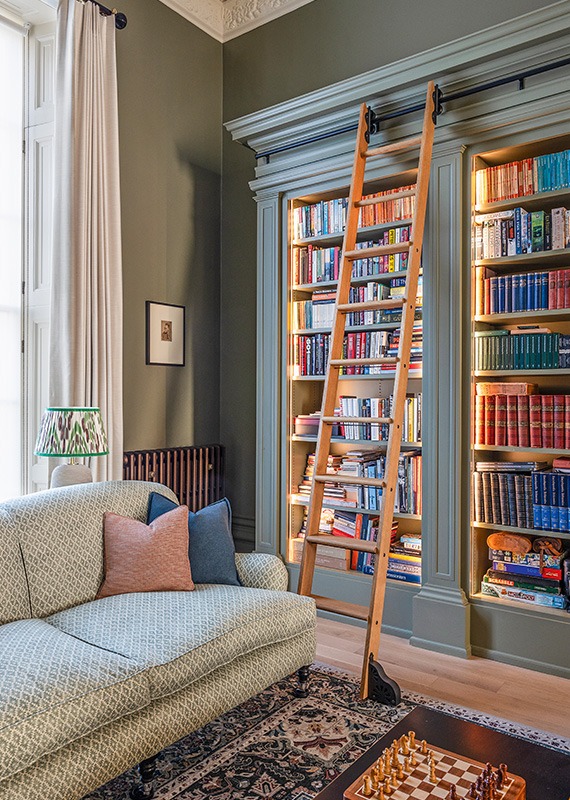
In a digital world of swipeable screens, there’s something quietly indulgent about the home library. Whether it’s a curated shelf of classics or a whole room dedicated to reading, today’s library is less about dusty tradition and more about mood. Yes, the tactile pleasure of paper still holds power – but in design terms, the modern library has moved well beyond books alone. These are spaces defined by light, materiality and calm intention – as much about how they feel as how they function.
For Pfeiffer Design, a grand Regency townhouse offered the perfect excuse to lean into this layered, thoughtful approach. The house has been reimagined for modern family living, but it hasn’t lost its sense of heritage. One of the most striking features? A bespoke library, built to house the client’s historic literature collection. Floor-to-ceiling joinery gives the room weight and warmth, while integrated lighting and a feature ladder add both function and theatre. The cabinetry is tailored, the palette is refined, and everything feels perfectly considered – proof that storage doesn’t have to be background noise.
pfeifferdesign.co.uk
How design-led shelving and considered joinery are redefining the home library as a space of quiet luxury
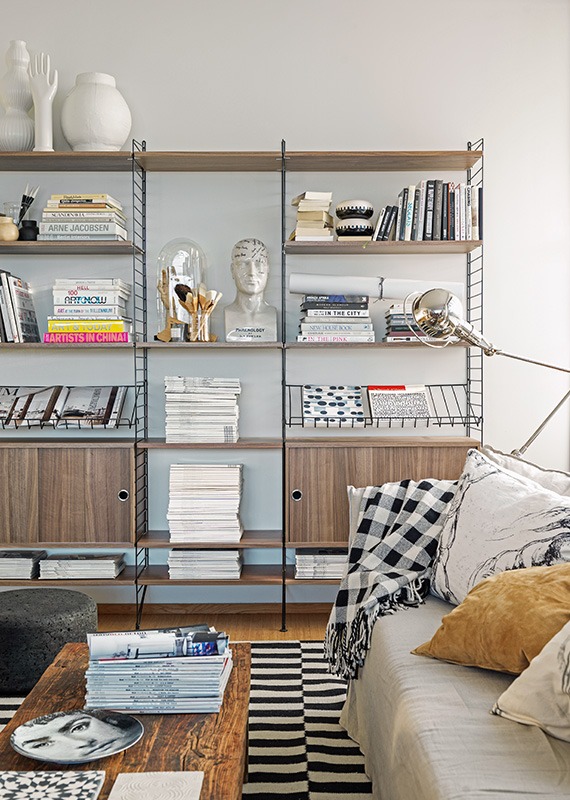
Storage with personality is something String Furniture knows well. A staple of Scandinavian design since 1949, the brand’s modular shelving has never really gone out of style – though today it feels more relevant than ever. “Shelves are now personal rather than just functional,” says Bo Hellberg, String’s CMO. “We believe that our shelves should be a reflection of our personalities and exhibit the objects that we’ve collected throughout our lives.” The beauty of the String System is its sheer flexibility. From oak to walnut to ash, compact floating shelves to full-scale statement walls, the configurations are near endless – and effortlessly stylish
But it’s not just about layout. As Bo points out, switching out bulky cabinets for open shelving can instantly lift a space: “Swapping even a small run of cabinets for open shelving can make a room feel larger and brighter.” In smaller homes, the impact is even more pronounced. Their Pira G2 system – a floor-to-ceiling modular design – works brilliantly as a room divider, zoning open-plan spaces while still letting light flow. “Floating shelves don’t take up a lot of physical – and therefore visual – space,” says Bo. “A pop of colourful shelving sits prettily against white walls, transforming a blank canvas into a functional focal point.”
stringfurniture.com
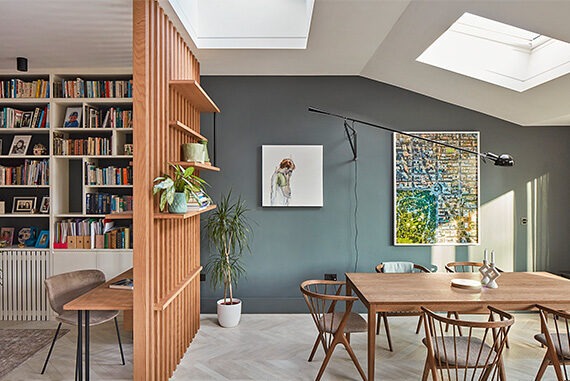
This sort of thoughtful zoning is also at play in The Main Company’s Scandi-inspired open-plan kitchen and living space. Here, the team designed a wall partition that subtly houses a desk and bookcase, allowing the library to feel naturally integrated into how the space is used – calm, connected, and cohesive. Working to a minimalist brief, the joinery uses ash across cabinetry, walls and doors, creating contrast with the soft neutral tones of the bookcase itself. The effect is low-key and calming, with no jarring transitions between reading, working or dining – just a soft visual flow from one space to the next.
maincompany.co.uk
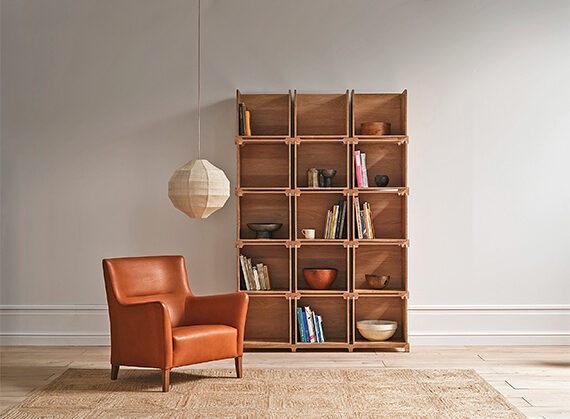
That balance between display and utility continues with Pinch, where craftsmanship and quiet elegance go hand in hand. The Post Office shelving system – made from modular oak boxes – is beautifully engineered and pleasingly versatile. It works just as well standing proud in a reading room as it does lining a hallway or wrapping a cosy snug. Like all Pinch pieces, it’s tactile and timeless. Style it alongside the Brody armchair and the sculptural Soren globe light, and you’ve got yourself a corner that’s as inviting as it is considered.
pinchdesign.com
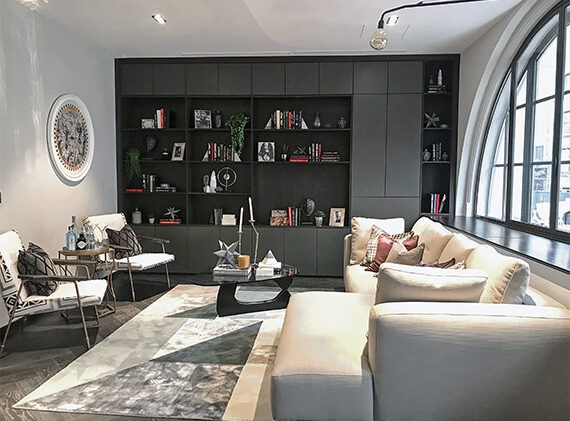
For Neatsmith, it’s all about precision – and anticipating how a space will actually be used. Their commission for a rare book collector involved an eight-metre, L-shaped run of shelving, tailored right down to the shelf depth and spacing. “The key considerations for the books themselves were depth of the shelving and shelving gaps (with a small element of adjustability),” says director Philipp Nagel. Beyond the practical, the team added integrated LEDs to illuminate the titles, along with a wireless charging point and a discreet fridge. “Other general considerations are the seating position relative to the light source,” Philipp adds, “either natural or via a reading lamp… and one must also consider the finish for the nook itself… Muted and complementary are what we would suggest.”
neatsmith.co.uk
And that, really, is what sets today’s home libraries apart. They’re not about showy displays or a single design narrative – they’re about flexibility, comfort and intent. You’ll find tonal, minimalist schemes like The Main Company’s, expressive open shelving like String’s, or architectural joinery with heritage leanings like Pfeiffer’s. Each one tells a different story, but all work to the same principles: great design, subtle detail, and the joy of having your beloved books exactly where you want them.

